Are you ready to take your CrossFit goals to the next level in 2023? With my favorite 10 simple tips, you can make it happen!
From jumping wall walks to maximizing your recovery, let's dive right in and break down how you can CRUSH it this year.
Tip 1: Rx+ Your Wall Walks
To make your wall walks Rx+, move your line closer to the wall if you practice harder than you play.
So if you practice with your line at eight inches, or even six inches away from the wall, the wall walks will get much harder.
I would liken it to if you only practice your wall balls with a 30-pound wall ball, and then you get to use a 20-pound ball in a competition, it'll feel like a dream and like a breeze.
The same goes for wall walks; make your wall walks a little bit harder.
I recommend changing where your target line is next to the wall and moving it closer to the wall, or you could move the finish line and the starting line a little bit further from the wall or maybe could do a little bit of both.
Bump one line out a couple of inches, bump the other line a couple of inches, and then you'll be doing wall walks Rx+.
That's going to make your life a heck of a lot harder, but it's going to make it easier on competition day.
Another thing you could do is, hypothetically, wear a vest. That seems way too difficult, but you could try it.
I personally have messed around with moving the lines, and wow, it makes the actual Rx wall walks so much easier.
You can read more about how to Rx wall walks here.
Or you can watch my YouTube tutorial here.
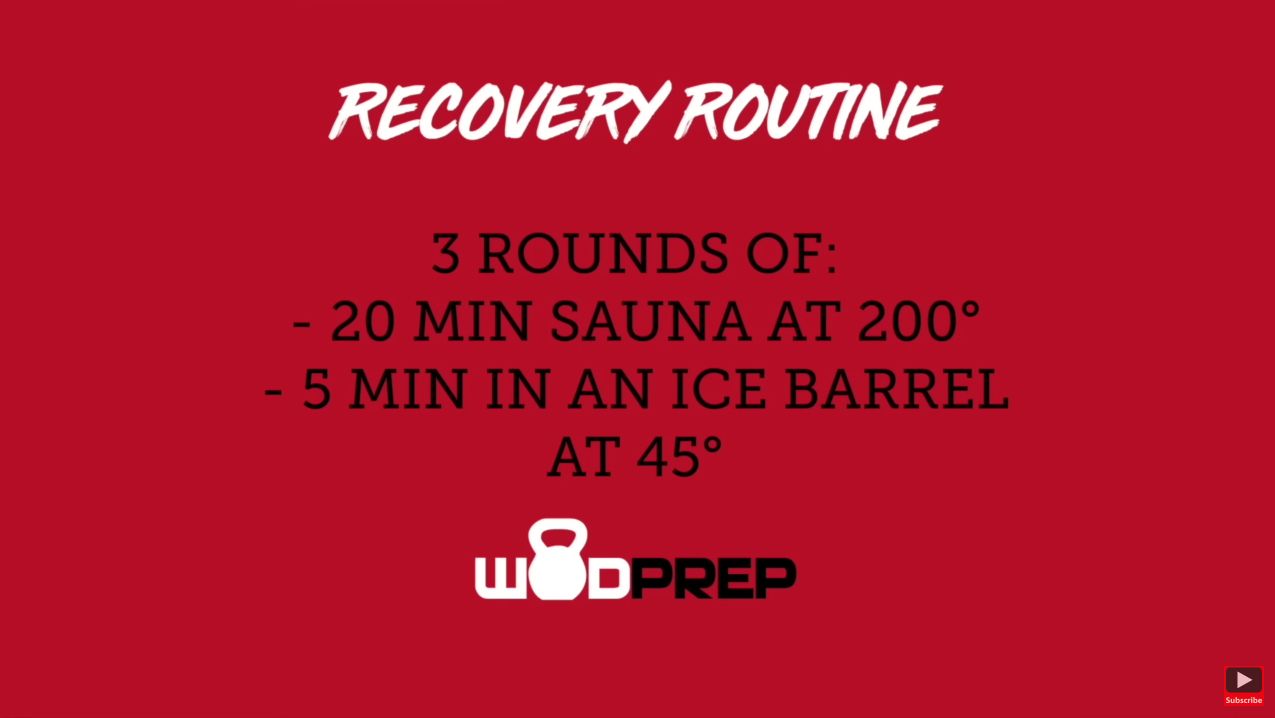
Tip 2: Recovery
Typically around 4:30ish, Eric will start his recovery routine: three rounds of 20 to 25 minutes in a barrel sauna at about 200 degrees, then five minutes in an ice barrel at about 42 to 45 degrees.
What that's doing is improving his circulation, and by improving your circulation, you will rid yourself of the inflammation from the training.
So you're not going to be as sore or as achy by doing contrast therapy.
That's the physical benefit of it.
Its mental benefits are even more remarkable because it builds stress resilience, and grit.
Eric has noticed over time that it takes something monumental to get stressed out.
He has practiced so many of these good stressors that his nervous system responds very well to stress now; he never gets sick from an immune system standpoint.
You can watch Eric's Ultimate Recovery Protocol here.
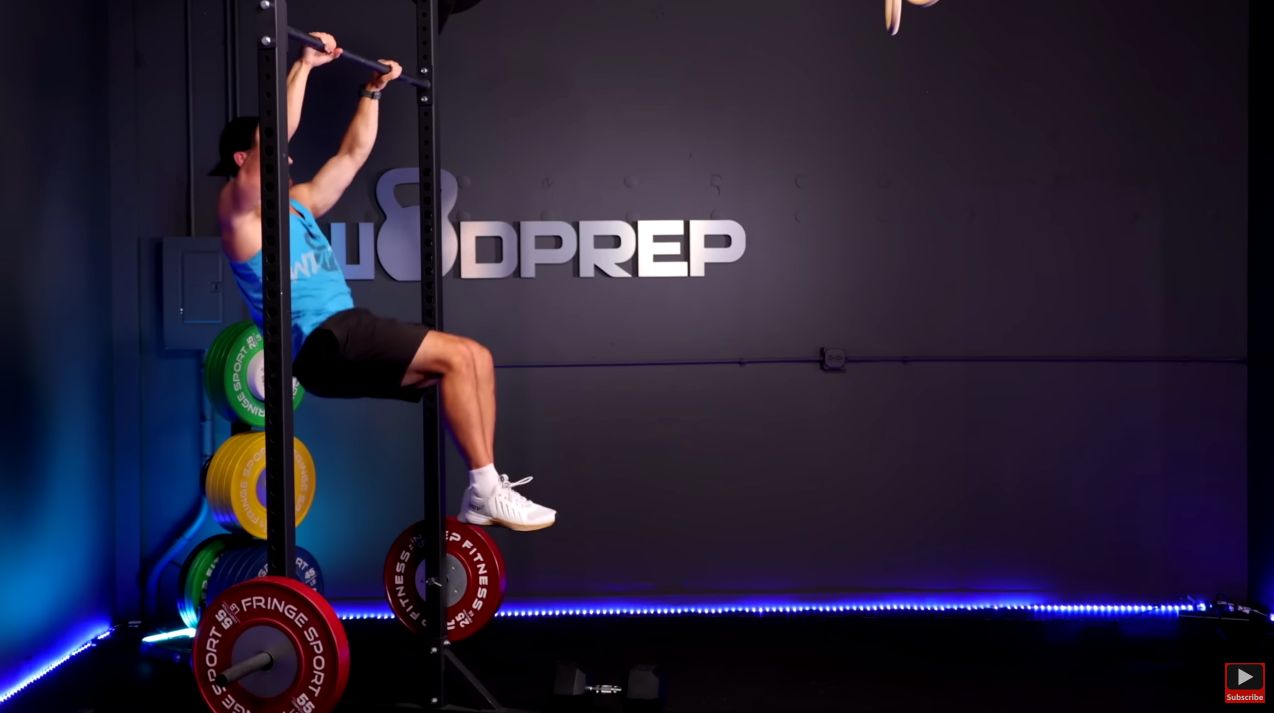
Tip 3: The Frog Kick
I know kipping pull-ups aren't "real"; we're cheating.
And when I say frog kick, you're like, "come on, Ben. Seriously?" but here's what I want you to do.
These are those really ugly pull-ups where people get their feet all wide, pulling up and up and up, and they're like, "I can't get there!"
Then they start to kick their legs out as they pull up, and they are able to get their chin above the bar.
There's a reason that works, right? It's because they're actually popping their hips.
They think it's a frog kick. If you've ever seen a frog swimming, they have their feet really wide, and they extend and extend.
This is a modified frog kick.
So here's what I want you to do; rather than allowing your feet to spread wide, I want you to think about gluing your feet together and then trying to do a frog kick.
The key is that you need to do it with the proper timing.
So if you practice doing your normal arch and hollow swings, I want you to do some kicking, and then I want you to start lifting your knees just a little bit.
And then at the top of your backswing, at the top of that lever position, I want you to think frog kick, but you can't let your feet spread apart; that's the key here.
You can watch my YouTube tutorial here.
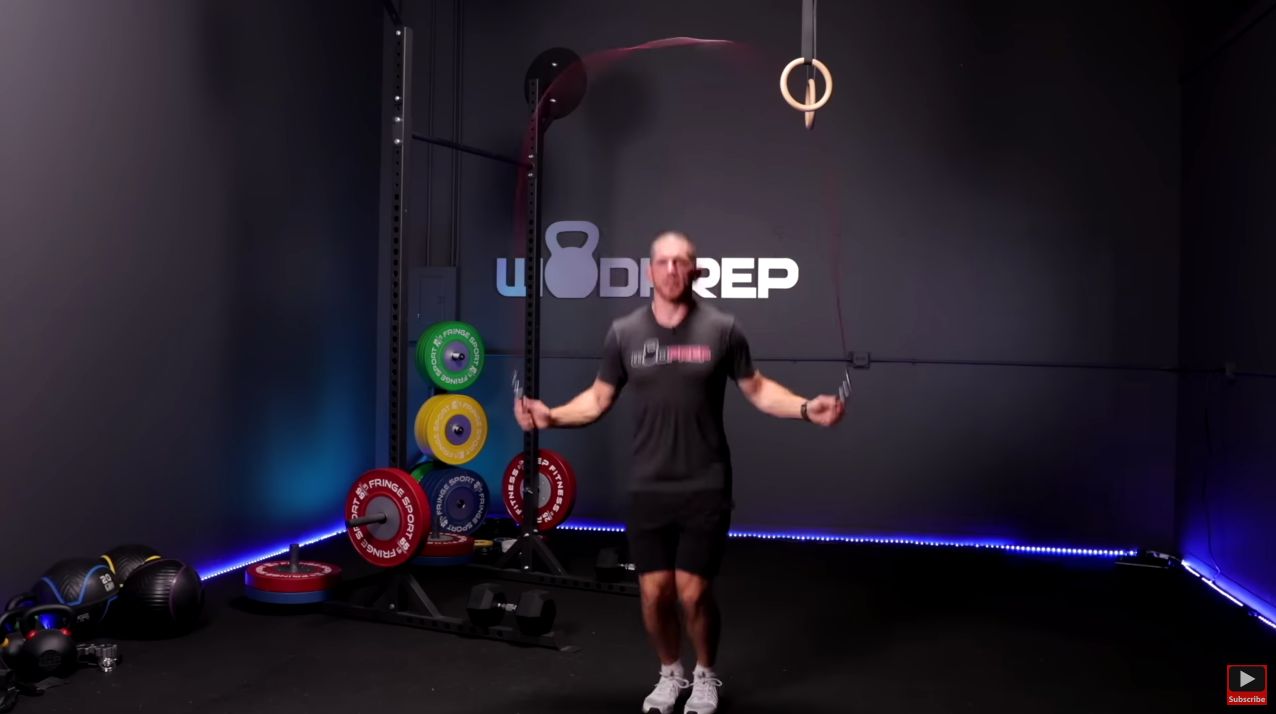
Tip 4: Variable Speed
Often, I see athletes only having one speed and one speed only.
Usually, it's really, really fast, so when they do double unders, it's just one speed, and it causes them to trip.
Maybe it's not very fast, maybe it's really fast, maybe somewhere in between.
To develop true mastery in double unders, learn how to vary your speed.
Can you do slow double unders and fast double unders without tripping?
What I mean by that is; I'll do my normal speed, but then can I slow it down? And then, can I go faster? And then, can I slow it down again?
A true double under master can vary their speeds from really, really slow and controlled and relaxed to really, really fast.
You can read more about how to vary speed here.
Or you can watch my YouTube tutorial here.
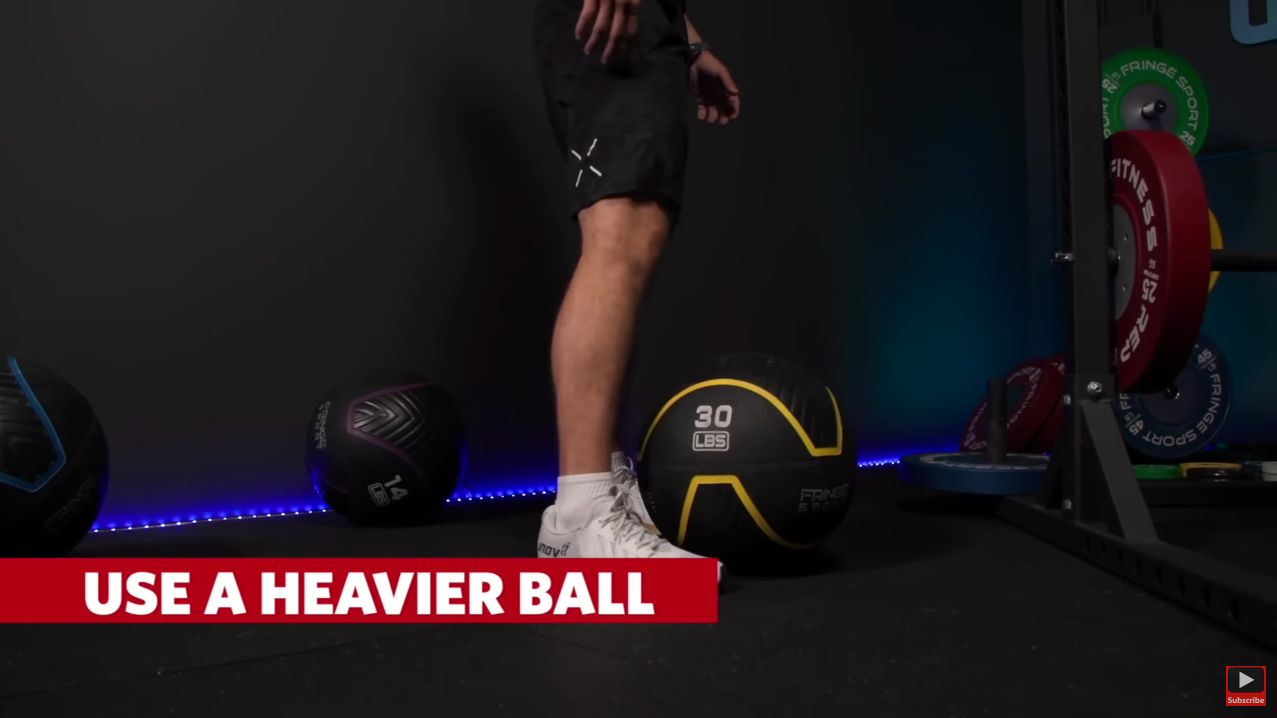
Tip 5: Use a Heavier Ball
Next, I want to teach you to use a heavier ball and practice.
Generally speaking, outside of the Open, I am always using a heavier wall ball or a higher target.
That conditions my body for a higher standard for something more challenging than the normal standard so that when I eventually come back, and I'm using a 20-pound ball to 10 feet high, it is easy, and it almost feels like a walk in the park.
You can read more about how to use a heavier ball here.
Or you can watch my YouTube tutorial here.
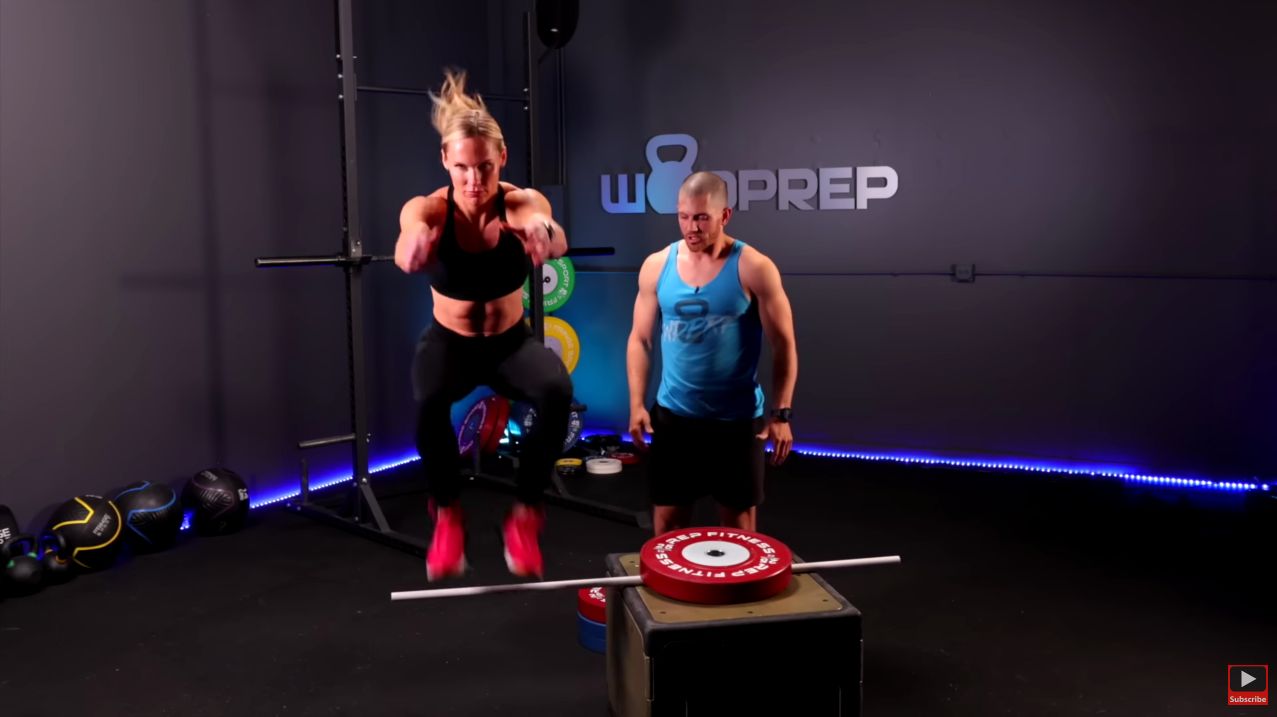
Tip 6: PVC Modification for Box Jumps
The final modification I've used successfully is adding a PVC pipe for a final scale.
So for athletes, for whatever reason, they're having trouble jumping onto the sharp square, rectangular box. I'll take a plate, put it on top of the box, and put a PVC pipe under the plate.
You're still jumping to the same height required to jump onto the 20-inch box; for whatever reason, it removes that mental barrier of a sharp, rectangular object.
So really, you can just jump over and back.
I've seen people jump over this laterally.
But especially for carrying over to the box jump, squaring up to the PVC, and doing all the same mechanics we discussed.
But if you fall, the chances of this PVC hurting us are very, very low compared to a sharp box made of wood or metal.
You can watch my YouTube tutorial here.
Tip 7: Isabel Strategy
This is my favorite strategy for Isabel.
By now, you already have the correct weight on the barbell, practiced your power snatch, your feet are in the proper position, and you have used a hook grip.
The most efficient way to do Isabel, and I've proven it repeatedly by beating people who should be beating me in this workout, is by doing singles. So for every single rep, I suggest doing quick singles.
So quick singles look like this: I would step up to the bar and get my feet set; this should all happen relatively quickly.
I would reach down and get my hook grip; most barbells will have marks on them, so you should easily look down and ensure that your hands are dead even.
I set up, I snatch, I stand, I drop.
I'm putting power into the ground, snatching that bar overhead, and standing up.
As soon as I lock it out when standing up, I drop the bar high and drop it in a controlled fashion so that it's not bouncing across the gym.
I might do one or two breaths when I drop it, and then I'm right back on the bar.
As you get tired, your breathing might get quicker. But what we're trying to do is setting a steady pace, where you're not relying on your brain to say, 'Okay, I'm ready to pick it back up,' because chances are, you're not going to pick the bar back up, you're gonna rest for 10-15 seconds.

Tip 8: Jumping Wall Walks
Here's what jumping wall walks look like: I would get into a downward dog position, but rather than just lifting my knees up, I would lift my knees and feet simultaneously, and then I'm walking up the wall.
Jumping correctly into the wall walks will make it a lot easier.
You can read more about how to do jumping wall walks here.
Or you can watch my YouTube tutorial here.
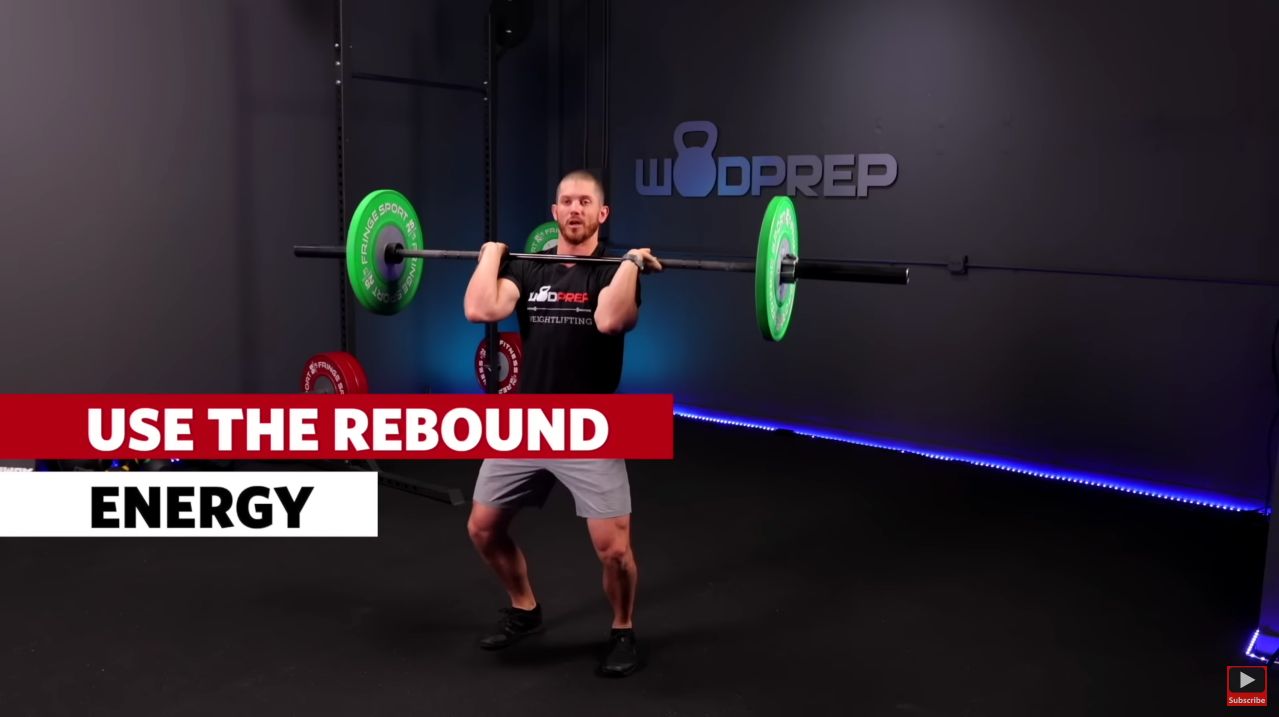
Tip 9: Overhead Barbell Cycling
A much more efficient way to cycle is to use the barbell bounce and use the absorption of that weight to go into your next rep.
It should look like this: when you receive the bar, it will hit your shoulders and immediately put you into a dip.
Then explode from the dip into your next movement.
You can watch my YouTube tutorial here.
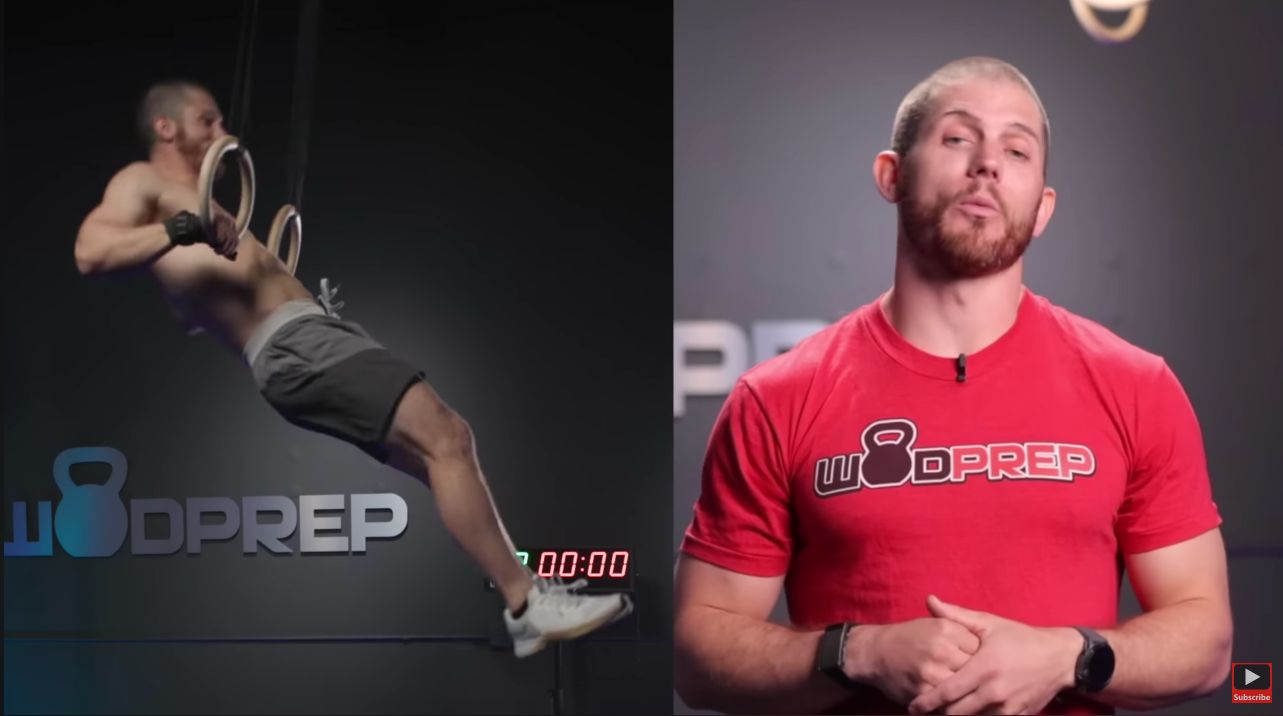
Tip 10: Muscle Up: The Re-Kip
All right, it's time to talk about my favorite part. While I love getting people their first bar and ring muscles, we have tons of content on YouTube, Facebook, and Instagram to help people get their first reps.
This is one that I'm pretty proud of figuring out, and that's the difference between the kipping unbroken ring and bar muscle-ups.
When we're trying to string together a set of five unbroken, the approach on the bar muscle upside should be quite different than the ring muscle ups.
And that's again, because of the apparatus that we're using, the rings will move forward and back, which is a good thing; the bar does not move forward and back, which is also a good thing.
With the ring muscle up, the cue that I teach athletes is to fall back, and what that means is that when we're locked up at the top of the rings, and it's time to transition to our next rep, into our kip, I tell people to just throw their head and shoulders back, and it almost feels like your just falling off the rings, but obviously, with your hands.
So on the rings, you're falling back.
That generates a huge momentous kip.
Many people say the second kipping ring muscle up, if you're actually good at doing the kip properly, is easier than the first because you have so much momentum.
But that does not work with bar muscle-ups, and this is a huge, huge issue that I fixed.
In every one of my bar muscle-up seminars, a lot of people will try to "fall back" on their bar muscle-ups. And what that does is that it gives them way too much momentum, and it almost makes them start to Tarzan swing.
It gives them so much crazy momentum on that arch, and they'll fall off the bar or won't work out; they just feel uncoordinated.
With a bar muscle up rather than fall back, I want you to think to fall down.
That means rather than driving my head and shoulders back and dropping below the rings. Instead, with a bar muscle up, I'm allowing the bar to stay close to my body as I transition to the next rep.
We're not wildly falling back and going to the world's most aggressive kip; we keep it slightly conservative by keeping the bar close.
I'll tell athletes to re-bend their arms on the way down, which helps keep the bar close to your body so that you can maintain a strong balance kip into the next rep.
Hopefully, you will see the difference in how far your shoulders and chest get away from the bar versus how far away your shoulders and chest get from the rings; it definitely is a difference.
When I tell people at a seminar, it's like, 'hey, when you're on the rings, fall back, or when you're on the bar, fall down, keep that bar close, stop trying to drive yourself back behind the bar because it's actually messing you up for your future reps.'
If you can unlock that little intricacy between the ring muscle ups and the bar muscle ups. It makes so many people's muscle-ups just click.
I've seen people at my seminars go from one or two ring muscle-ups in a row to over five.
So again, fall down for the bar muscle to fall back for the ring muscle-up.
You can watch my YouTube tutorial here.
To Summarize
I hope my favorite top 10 tips from my past Youtube videos and blog articles help you to crush your 2023 CrossFit goals.
If you want everything that WODprep offers, all of my best tips and tricks to help you learn all of the skills that come from inside a CrossFit gym, then join the WODprep Academy.
It's the best deal that we have. It's all of my best training material and training courses combined in one place for low annual costs.
Good luck!
